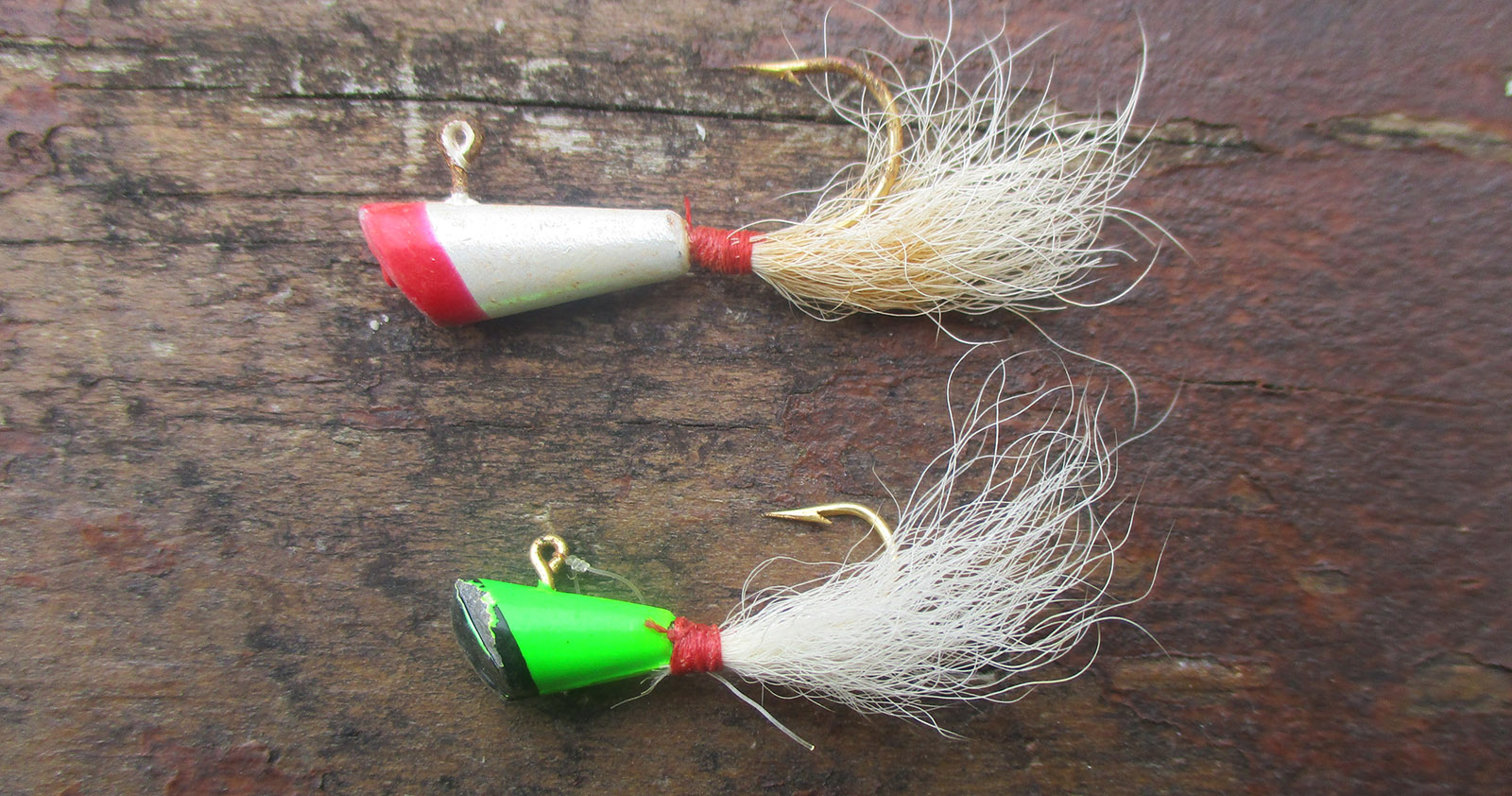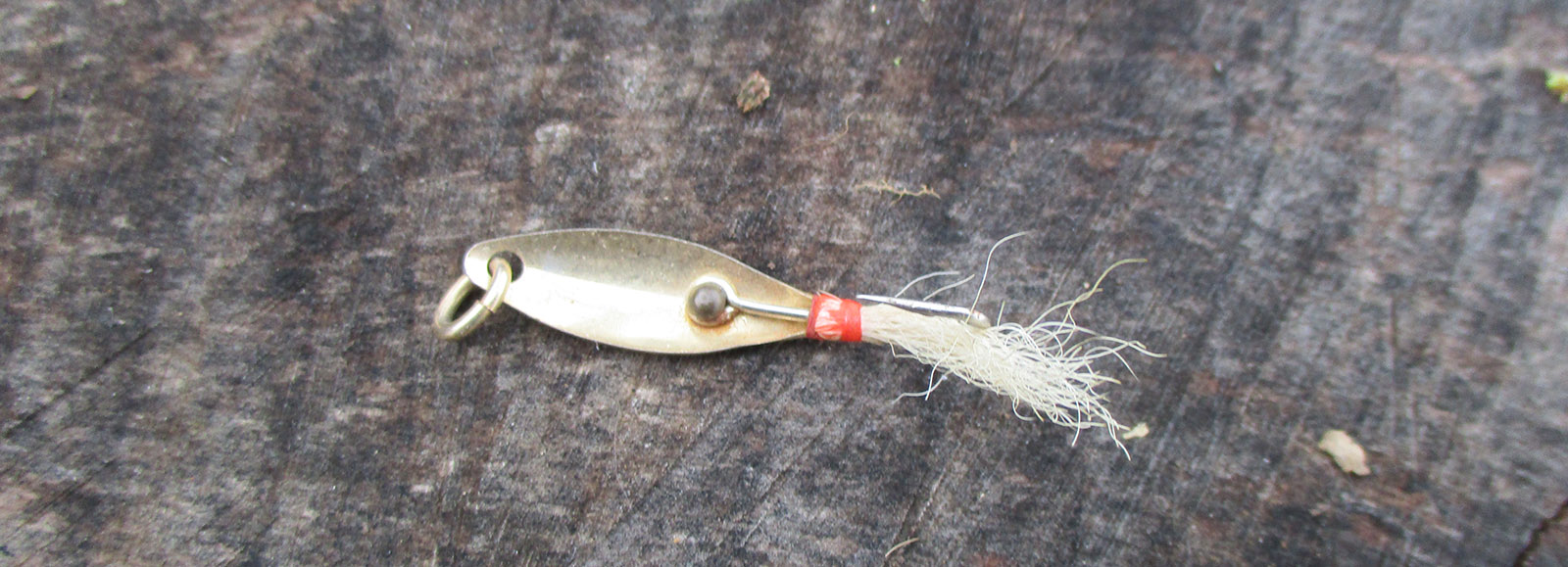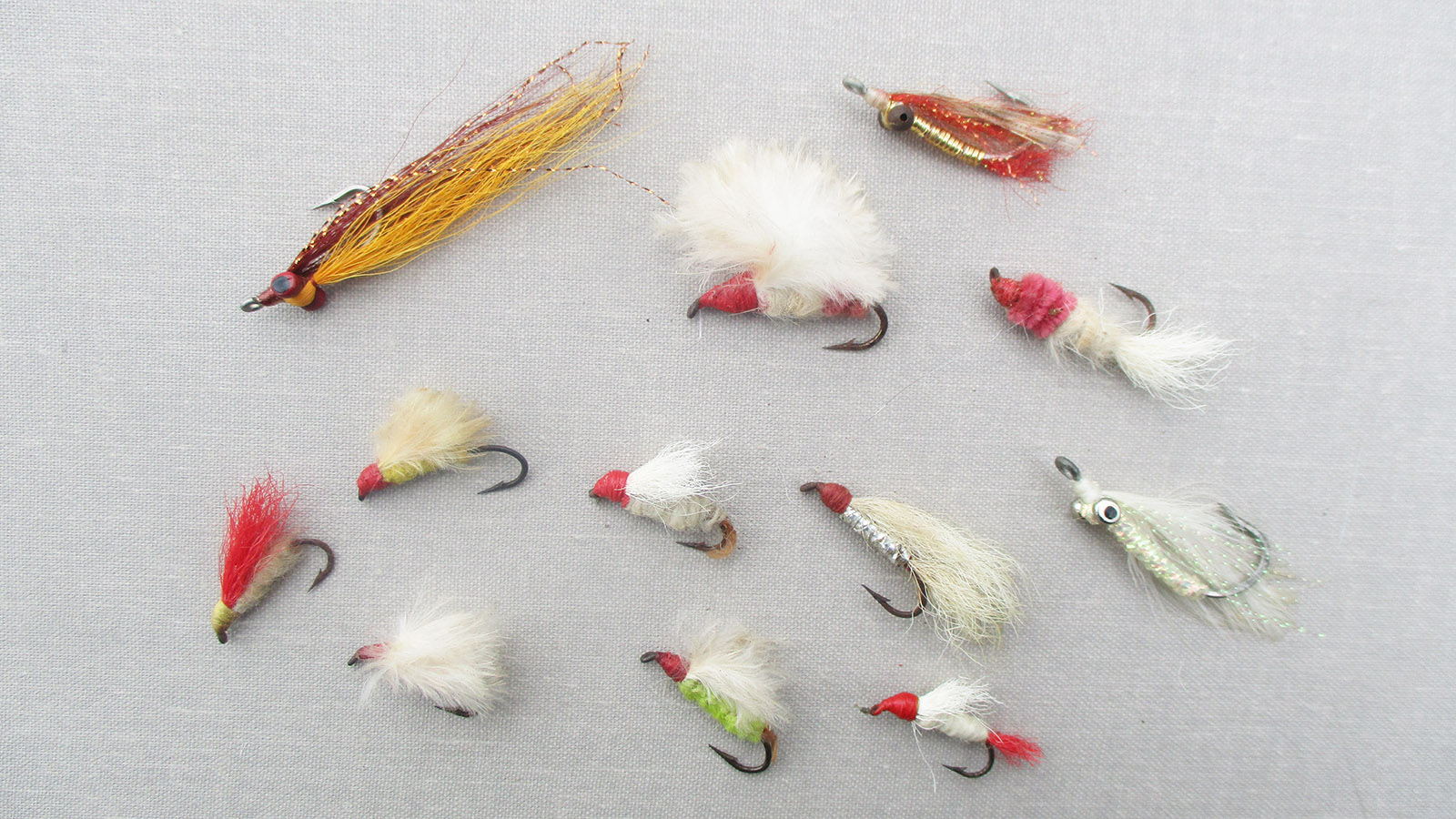By Gerald Almy
Photos by Gerald Almy
When redbuds bloom on hillsides and winter loosens its icy grip on the land, Virginia anglers face a rich dilemma. Which species shall I try for? Bass are feeding in the shallows, crappie are schooling near flooded brush piles, and trout streams beckon with the first hatches of spring.
But for many fishermen, the list of spring fishing adventures is topped by one species—shad. Well two, actually. Both white (American) shad and hickories migrate up Virginia rivers. Both strike the same lures and flies, and both tail-walk wildly across the surface when hooked. Keep in mind that American shad are catch-and-release only (possession is illegal), and know the difference between American and hickories!
The reason many anglers target shad in spring is because they are only here briefly, during their spawning runs, like a breath of the sea blown miraculously inland for us to savor. Six, eight weeks and they’ll be gone, while crappies, bass and trout remain for us to try for the rest of the year.
To make sure you enjoy this fishing in rivers such as the Mattaponi, Occoquan, James, Pamunkey, Potomac and Rappahannock, now is the time to get ready by stocking the best lures, flies, terminal gear, and tackle. It’s also time to freshen up your knowledge of the best holding lies to find these fish in and the most effective presentations to use. Here’s a quick crash course on getting ready for shad fishing.
Access to the Fish
Shad can be approached from shore, in a boat, or by wading. Any light johnboat and low horsepower motor will do. Sometimes just an electric motor is enough. Anglers approaching the quarry from shore have dozens of access points on the most popular Virginia shad rivers. That’s true for wade fishermen as well, but if that’s the approach you plan, you’ll want to add chest waders, a staff, and flotation vest to your list of needed fishing gear. Shad rivers flow full during spring runs, making a staff and vest vital, and the water is too cold for wet-wading in jeans and sneakers.
Take a reconnaissance trip to scope out good access points for wade fishing, places to launch a boat, and spots that offer good shore locations where lures and flies can be presented across and swing in front of the shad. That’s the most effective delivery. For fly fishing from the bank, also look for spots that will allow a back cast without snagging on tree branches. Fishing tackle shops can help with tips on good shad rivers near your home, but be sure to take a trip or two to scope out trails along the river and pinpoint specific areas you’d like to fish.
Timing of Runs
Shad begin swimming up Virginia’s rivers in February, but most anglers don’t start fishing until March when water temperatures warm into the 50s. During that month warming waters increase both the number of shad present and their metabolism, which makes them strike lures and flies more readily. Anticipate great fishing throughout April. Some shad are still available through mid-May. For that late fishing, though, it pays to downsize offerings and use lighter lines and tippets. The fish have been worked over pretty hard by then.
Riggings
A simple rig of a lure tied to the end of the line on a spin-fishing outfit or a single fly at the end of a tapered leader will fool plenty of shad. At times, adding a split shot or two a foot or so above the lure or fly will help get the offering deeper where fish may be holding.
Another option is using tandem lures or flies. When tying a tippet at the end of the fly leader with a blood knot, leave one tag end extra-long as you cinch up the knot. Then tie one fly to the end of the leader and a second to the long piece of line extending from one side of the blood knot.
This rigging method works for lures as well. Alternately, you can tie in a three-way swivel and attach an 18–24-inch leader to one eyelet and a 10–12-inch leader to the other eyelet, attaching a lure to each one. Another rig, good for dangling lures behind an anchored boat or trolling, involves simply tying one lure on with a regular improved clinch knot but leaving the tag end of that knot long enough (12-18 inches) to tie another lure to.
Presentations
Shad do little or no feeding while in rivers on their spawning runs. The trick is to goad them into striking with a colorful or shiny offering, presented at the best angle to entice a take. This almost always means casting across and retrieving the lure or fly with a sideways presentation, so it swings in front of the fish. Casting slightly upstream also helps, allowing the lure or fly to sink a bit before reaching prime holding lies across from your position or slightly downstream.
Occasionally a cast downstream will work, with the offering hanging below you in the current, then slowly retrieved upstream. Allowing a lure to simply hang downstream from an anchored boat, wavering in the current, is another good presentation.
To Jig or Not to Jig
This is a toss-up! Some anglers score better with a steadily retrieved lure or fly. Others enjoy manipulating the offering with sharp spurts or twitches of the rod tip. I’ve tried both approaches; each seems to work as well as the other. If forced to choose, I would say flies are better fished in spurts; lures are effective both ways–either twitched or steadily reeled in.
Top Artificials
A shad lure needs to be compact, brightly colored or shiny, and sink to the level fish are holding at. That usually means main river pools at mid-depths or near the bottom, where rocks slow the current. A number of lures fit this description. Here are three proven choices for catching these feisty migrants from the sea.
Shad Dart
Something about their angular shape and minnow-mimicking silhouette makes these jigs the single best lure of all for shad fishing. Use 1/32- to 1/8-ounce sizes, depending on water depth and speed of the current. Larger jigs work best early and when a river is murky; smaller ones are best for late season and clear waters.
The original shad dart was tied with a bright red head and white body. On many rivers such as the Rappahannock a chartreuse body and darker green or red head is now the top color combination.

Classic shad darts.
Spoon
This lure runs a close second to darts for top billing. Its wobble and flash draw belligerent strikes from shad, and it shows up well in cloudy waters. Spoons are great for trolling or fishing suspended behind an anchored boat. A popular way to fish spoons is in tandem with a dart. Use a three-way swivel or tie an 18- to 24-inch leader to the bend of the spoon’s hook and attach a light dart to that. Best colors: silver and gold.

The basic spoon.
Spinner
If you want to go with lures that you probably already have in your tackle box for targeting other species, opt for a compact spinner with silver or gold blade and bright hued body and dressing. Chartreuse and orange are the top colors. These can be fished with a twitching retrieve, but steady reeling usually draws more solid hookups.
Flies
Flies should be colorful or use flashy material such as tinsel, Mylar, bead eyes, or cone heads. Here are three good ones to try in size 4 through 8.

A variety of flies for shad. A bead head wooly bugger is on the top left, while crazy Charlie bonefish flies are top right and bottom right, with the rest shad flies.
Shad Fly
I created this pattern to make a fly that looked just like a shad dart. It consists of a thick chartreuse or yellow rabbit fur body spun on a wet fly or nymph hook with a short white marabou wing tied flat along the top of the body. It’s finished with a chunky head of red thread lacquered for durability. This pattern also works well tied with a weighted conehead. If you don’t use a weighted head, wrap wire around the shank before the rabbit fur to get the fly down in the strike zone.
Crazy Charlie Bonefish Fly
This fly revolutionized bonefishing. It is the only pattern used at some saltwater destinations. The secret for its effectiveness for shad lies in the sparse dressing that flashes and wavers on the retrieve and bead eyes that look like baitfish eyes.
Cone-head or Bead Head Woolly Bugger
These are popular smallmouth flies on Virginia’s rivers, but in brighter colors they are deadly on shad. The weighted head allows them to be fished much like a shad dart with rhythmical twitching.
Use bright bead heads, and dressings in different color combinations of red, orange, white, or light green. Stock a variety of colors and try different ones on different days and even different times throughout the day. Tungsten is the heaviest and most environmentally friendly material for cone heads.
Tackle
Fly rods of 8 to 9 feet for a 5-7 weight line are best. Spool the reel with a fast-sinking tip line and use a short, tapered leader with a 4- to 8-pound tippet. Long casts aren’t required, but getting the fly down to the strike zone in high spring waters is vital. Very small split shots can also be crimped on 12 to 18 inches above the fly if it’s not getting deep quickly enough.
Spin fishermen use 6 to 7 ½-foot light action rods and reels spooled with 4- to 8-pound line.
Don’t ignore Virginia’s great bass, crappie, and trout fishing, but save a few dates for shad this spring!


